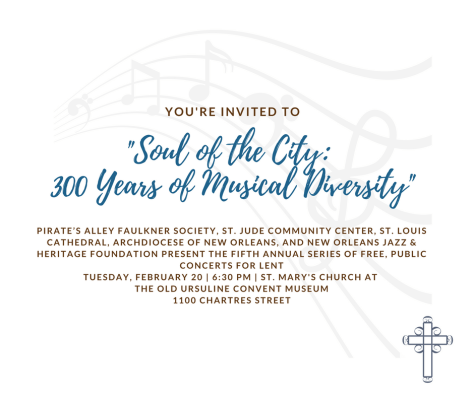Just attended the very excellent morning event at the Monteleone Hotel for the Making New Orleans Home: A Tricentennial Symposium.
This free set of events is happening today at the Monteleone, tomorrow at Xavier, and Sunday at UNO.
This morning’s talk, by Shannon Lee Dawdy, professor of anthropology at University of Chicago and D. Ryan Gray at University of New Orleans, was focused on the archaeological evidence found at a few sites in the French Quarter over the last 20 years, as well as those professors using the tricentennial spotlight to state the clear political need to getting New Orleans a designation as World Heritage Site or at least an ordinance established on excavating properly before a new development is begun. (Professor Dowdy’s comment about how dire this situation was before Katrina was illustrated by her estimation of having only “5 cubic meters” of excavated of Colonial-era material available before Katrina.)
The two speakers were both known to me previously; Dowdy through her brilliant book, Revisiting the Devil’s Empire: French Colonial New Orleans – which is one of my top books on New Orleans history – and Gray through his digs, especially the one around the corner at 810 Royal, the details of which can be found here.
Dowdy’s focus has been on what she terms the “rogue colonialism” of the period from 1699-1769, and especially the years before the “administrative abandonment” of New Orleans by the French Crown in the 1730s. That abandonment was a result of the failure of Law’s Company of the West (more popularly known as The Mississippi Company) which ended in the economic failure known as The Mississippi Bubble.
(Of course, the French Crown retained control of the colony until the 1760s, but did little with it and so it was not until the Spanish rule that the infrastructure expanded along with the population.)
Professor Dowdy’s theory is that during the earlier Colonial period shipping and trade were actually more robust than official accounts of the time offer because so much of what was happening was technically illegal (as it was meant to be managed exclusively by Law and later by or through the Crown.) Even during and after the Bubble, locals amassed wealth which was indicated by findings on these digs analyzed as goods procured via smuggling routes, particularly with Cuba, Mexico and the Carribean islands. With her 2004-2005 dig at the Rising Sun Hotel on the Conti block between Chartres and Decatur, the 2009 St. Anthony’s Garden dig at the back of St. Louis Cathedral and the 2011 dig at the old Ursuline Convent, many of the artifacts date from the 1750s and include Mexican pottery, Spanish coins, gilded glass long before Spanish control. Her St. Anthony’s Garden dig gave material evidence to the idea of the Native American settlement, with huts that predate the 1726 gridlines of New Orleans as do a significant number of artifacts found at the Convent site.
The dig at the back of the Cathedral (Dowdy confesses this was her favorite New Orleans dig) indicates a robust market operating there from the 1740s to 1788, including extensive evidence of camping which suggests that many people came to town to sell or barter there.
After Dowdy presented, Professor Gray used the old St. Peter Cemetery as an excellent example of the lack of protection around our buried history. That cemetery was between Rampart and Burgundy and Toulouse and St. Peter and operated between 1725 and 1789 as a Catholic cemetery for both enslaved and free citizens. After it was no longer used, the ownership of the cemetery was tangled between the Cabildo and the Church so when the Cabildo sold off parcels of it, the Church refused to move the bodies.
Since then, it has been up to private developers and lot owners in that area to undertake an archaeological dig, as happened during the building of the Maison Dupuy in the 1970s, during condo development in the 1980s and most famously, during a potential swimming pool addition by homeowner Vincent Marcello who contacted UNO which resulted in the removal of 15 bodies to a vault in St. Louis #1.
The best comment of the morning was from Professor Gray summing up the current problem: “For a city that cares so much about its history, very few protections are in place to preserve the material past.”










You must be logged in to post a comment.